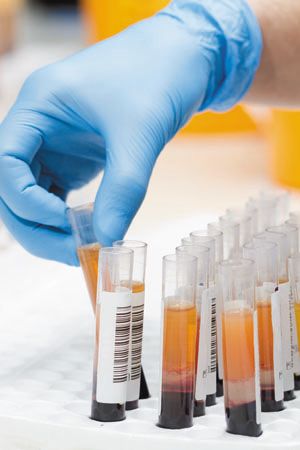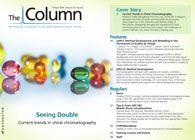LC–MS–MS Approach to Aid the Optimization of Biopharmaceutical Immunogenicity Assays
Scientists from Bristol-Myers Squibb Company have developed a novel approach for the simultaneous quantitation of neutralizing antibodies, residual drug, and human Immunoglobulin G (IgG) in immunogenicity assay development using liquid chromatography–tandem mass spectrometry (LC–MS–MS). This work published in Analytical Chemistry presents a new approach that aids the refinement of therapeutic protein neutralizing antibody assays in drug development

Scientists from Bristol-Myers Squibb Company have developed a novel approach for the simultaneous quantitation of neutralizing antibodies, residual drug, and human Immunoglobulin G (IgG) in immunogenicity assay development using liquid chromatography–tandem mass spectrometry (LC–MS–MS). This work published in Analytical Chemistry presents a new approach that aids the refinement of therapeutic protein neutralizing antibody assays in drug development.
Patients who are given biopharmaceutical formulations can produce anti-drug antibodies (ADAs) that can impact drug efficacy. During clinical trials analysts need to determine the effect of ADAs on the efficacy of drugs in patient serum. ADAs are extracted from patient serum samples, and are quantified using cell-based neutralizing antibody assays. Robert Dodge, co-author of the publication, said: “Since functional assays usually rely on live cells, this method also allows the simultaneous measurement of interfering components in a sample that may affect cell health or cell response independent of the drug.”
Samples need to be cleaned-up before performing cell-based assays, removing the drug and other interfering components from the plasma/serum samples using bead extraction and acid dissociation (BEAD), according to co-author Hao Jiang. Acid is used to break the binding between ADAs and drug present in samples, and beads are used to extract the antibodies that can then be used in the cell‑based assay.
BEAD can be an effective approach to purifying and enriching drug–antibody complexes, but it is sensitive to interferences from non-specific binding and carryover of endogenous serum components. Jiang said: “For accurate measurement of the neutralizing effect, it is critical to understand how much of the anti-drug antibodies are extracted and if there are any residual drug and endogenous proteins carried over from the BEAD procedure.”
Ligand binding assays (LBA) are the usual method for measuring low-level drug concentration but lack sensitivity when performed on serum samples containing a high concentration of ADA, according to Jiang. Jiang told The Column: “There are also no reagents available for endogenous interfering components measurement. In addition, different assays are needed for anti-drug antibodies, residual drugs and endogenous components even though all reagents are available while LC–MS–MS can measure all three in a single assay.”
The team applied liquid LC–MS–MS to simultaneously detect residual drug, endogenous IgG, and neutralizing antibody recovery following BEAD, thereby aiding optimization of BEAD and improving the accuracy of the cell-based assay. Jiang stated: “A 0.3 nM lower limit of quantitation (LLOQ) was achieved for all three analytes with 25-µL extracted samples.”
Dodge told The Column: “This methodology has been successfully applied to assist in development of functional cell-based neutralizing antibody assays for two therapeutic monoclonal antibodies (mAbs) at Bristol-Myers Squibb Co, and will continue to be refined to aid in assay improvements for these and other therapeutic protein neutralizing antibody assays in development.” — B.D.
Reference
H. Jiang et al., Analytical Chemistry86(5), 2673–2680 (2014).

New Method Explored for the Detection of CECs in Crops Irrigated with Contaminated Water
April 30th 2025This new study presents a validated QuEChERS–LC-MS/MS method for detecting eight persistent, mobile, and toxic substances in escarole, tomatoes, and tomato leaves irrigated with contaminated water.

.png&w=3840&q=75)

.png&w=3840&q=75)



.png&w=3840&q=75)



.png&w=3840&q=75)









